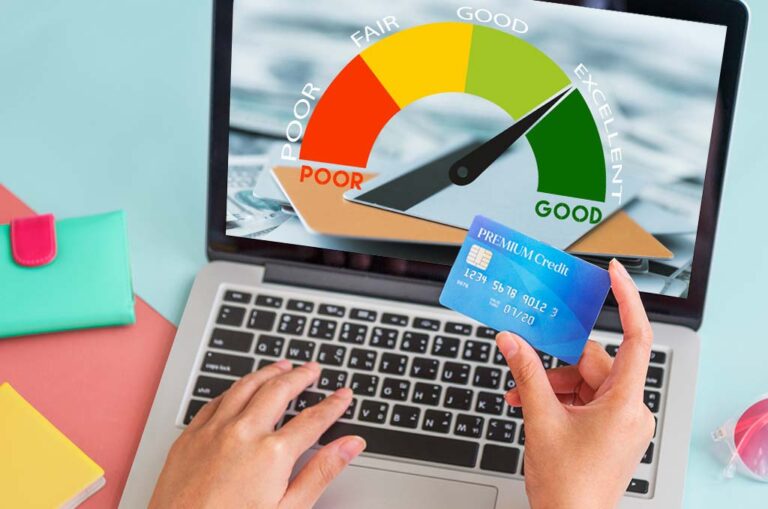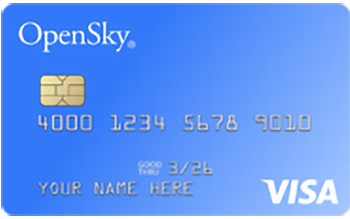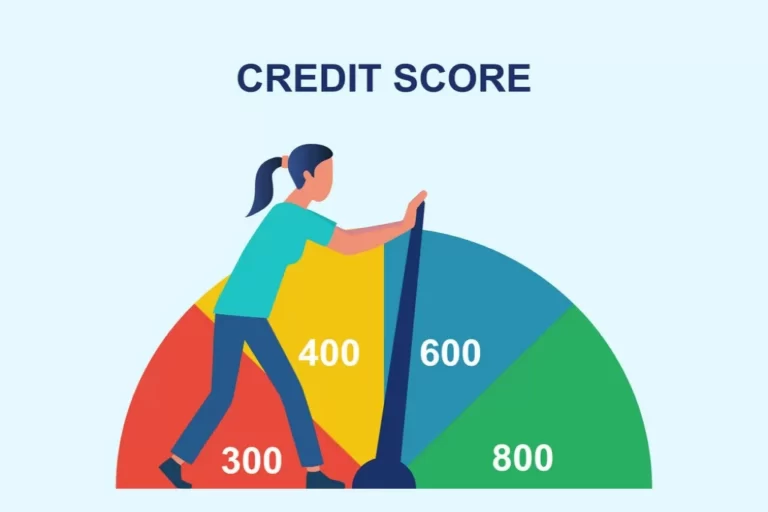If you’ve ever tried to apply for credit with a below-average credit score, you know how challenging it can be. Credit cards want you to have built a credit history to qualify, but you must first have access to credit to build a credit history.
The good news is that many credit cards are specifically designed for low-credit borrowers. These cards make qualifying easy, meaning you won’t need a lengthy credit history or high credit score. And once you are eligible, you can use the card to build your credit.
Are you wondering what the best credit cards are for borrowers with a 600 credit score? Keep reading to find out.
Is 600 A Good Credit Score?
Credit scores can fall anywhere from 300 to 850, with 850 being the best score available. Within that large scale are five different ranges: poor, fair, good, very good, and excellent. Here are the scores on each of those ranges:
- Poor: > 580
- Fair: 580 – 669
- Good: 670 – 739
- Very Good: 740 – 799
- Excellent: 800+
As you can see, a credit score of 600 would be considered fair. While it doesn’t fall in the poor category, there’s certainly room for improvement.
Can I Get A Credit Card With A 600 Credit Score?
If you have a credit score of 600, you may wonder whether you can even qualify for a credit card. The good news is that you can.
Yes, many credit card companies require good or very good scores to qualify for their credit cards. And that’s usually the case for the best cards with many rewards. But there are also plenty of cards available to borrowers with fair credit.
In the section below, we’ve rounded up seven of the best cards available for borrowers with a 600 credit score. While they may not have all the perks you’d find with a premium credit card, many offer cash-back rewards and other benefits.
Best Credit Cards For 600 Credit Score
Best Overall: Capital One QuicksilverOne
Why we like it:
- The Capital One QuicksilverOne Cash Rewards Credit Card is a standout option for individuals with an average credit score. It strikes an excellent balance between accessibility and rewarding spending habits. With its nominal annual fee of $39, it offers a solid return on investment, particularly for those who spend regularly. The unlimited 1.5% cash back ensures that you're earning rewards on every purchase, regardless of category.
- Moreover, the absence of a security deposit sets it apart from many other cards in this category. This means you can start building your credit without needing to put down a significant amount of money upfront. The potential for a credit limit increase after six months further incentivizes responsible card use.

Annual Fees

Regular APR

Credit Required
Annual Fees
Regular APR
Credit Required
Why we like it:
- The Capital One QuicksilverOne Cash Rewards Credit Card is a standout option for individuals with an average credit score. It strikes an excellent balance between accessibility and rewarding spending habits. With its nominal annual fee of $39, it offers a solid return on investment, particularly for those who spend regularly. The unlimited 1.5% cash back ensures that you're earning rewards on every purchase, regardless of category.
- Moreover, the absence of a security deposit sets it apart from many other cards in this category. This means you can start building your credit without needing to put down a significant amount of money upfront. The potential for a credit limit increase after six months further incentivizes responsible card use.
The Capital One QuicksilverOne Cash Rewards has many features of a more sought-after card but without the high credit score requirements. You can qualify for this card with a fair credit score between 580 and 670.
According to Capital One, you could have also defaulted on a loan within the past five years or have a limited credit history.
This card offers 1.5% cash back on all of your purchases. You’ll also get 5% cash back on hotel and rental car transactions you book through Capital One Travel.
Other benefits this card offers include automatic credit line reviews, credit score monitoring with CreditWise from Capital One, and no foreign transaction fees.
Between the elevated rewards on certain travel purchases and no foreign transaction fees, this could make for a great travel card (though we also have another travel card on our list).
Pros:
- Unlimited 1.5% cash back on all purchases.
- Potential for credit limit increase after six months.
- No security deposit required.
- $0 Fraud Liability.
- Complimentary Uber One membership benefit.
Cons:
- Relatively high APR of 30.74% variable.
- No introductory APR period for purchases or balance transfers.
Best For Cashback Rewards: Petal 2 “Cash Back, No Fees”
Why we like it:
- The Petal® 2 "Cash Back, No Fees" Visa® Credit Card is a standout choice for individuals with a credit score ranging from average to excellent. Its commitment to no fees whatsoever is a breath of fresh air in an industry where hidden charges can catch cardholders off guard.
- Moreover, the rewards program provides a strong incentive for responsible financial habits. This combination of financial flexibility and reward potential makes the Petal® 2 card a standout option for anyone looking to build their credit history.

Annual Fees
$0

Regular APR
17.24% – 31.24%

Credit Required
None
Annual Fees
$0
Regular APR
17.24% – 31.24%
Credit Required
None
Why we like it:
- The Petal® 2 "Cash Back, No Fees" Visa® Credit Card is a standout choice for individuals with a credit score ranging from average to excellent. Its commitment to no fees whatsoever is a breath of fresh air in an industry where hidden charges can catch cardholders off guard.
- Moreover, the rewards program provides a strong incentive for responsible financial habits. This combination of financial flexibility and reward potential makes the Petal® 2 card a standout option for anyone looking to build their credit history.
Pros:
- No annual fee, late fees, or foreign transaction fees.
- Robust cash-back rewards program, comparable to cards for excellent credit.
- No security deposit required.
- Potential for a high credit limit based on creditworthiness.
- Travel-friendly with no foreign transaction fees.
Cons:
- Variable APR can be high, especially for those with lower credit scores.
- Rewards program requires consistent on-time payments for maximum benefit.
Best Secured Rewards Card: Discover It® Secured
Why we like it:
- The Discover it® Secured Credit Card is a standout choice for individuals with a credit score between 300 and 629. It's an absolute game-changer for those looking to build or rebuild credit. This card offers an enticing combination of no annual fee, a competitive APR, and the rare perk of cash back rewards on your spending. This sets it apart from many secured cards in the market.
- What truly elevates this card is its commitment to the cardholder's financial journey. Discover not only helps you build credit by reporting payments to major credit bureaus but also actively supports your progression. The monthly automatic reviews starting at seven months offer a clear path to graduation, a feature that's surprisingly rare among secured cards. Plus, the absence of an annual fee means more of your money can go towards building your credit.

Annual Fees

Regular APR

Credit Required
Annual Fees
Regular APR
Credit Required
Why we like it:
- The Discover it® Secured Credit Card is a standout choice for individuals with a credit score between 300 and 629. It's an absolute game-changer for those looking to build or rebuild credit. This card offers an enticing combination of no annual fee, a competitive APR, and the rare perk of cash back rewards on your spending. This sets it apart from many secured cards in the market.
- What truly elevates this card is its commitment to the cardholder's financial journey. Discover not only helps you build credit by reporting payments to major credit bureaus but also actively supports your progression. The monthly automatic reviews starting at seven months offer a clear path to graduation, a feature that's surprisingly rare among secured cards. Plus, the absence of an annual fee means more of your money can go towards building your credit.
First, you’ll get 2% cash back on gas station and restaurant purchases up to $1,000 each quarter. You’ll also get 1% cash back on all other purchases. Finally, at the end of your first year, Discover will give you a dollar-for-dollar match of the cash back you’ve earned.
Pros:
- Cash back rewards, a rarity for secured cards.
- A clear path to upgrade to an unsecured card.
- No annual fee.
- Tools for online security.
- Payments reported to credit bureaus for credit building
Cons:
- High standard APR, requiring full monthly balance payments.
- An upfront security deposit is needed.
Best After A Bankruptcy: Indigo Mastercard®
Why we like it:
- The Indigo Mastercard® stands out as a viable option for individuals with a credit score of around 600. Its low annual fee range accommodates different financial situations, while the ability to prequalify without affecting your credit score is a major plus. The reporting to all three major credit bureaus ensures that your responsible credit behavior doesn't go unnoticed.
- Furthermore, the additional protections offered by Mastercard®, including ID theft protection and zero-liability protection, provide cardholders with peace of mind.

Annual Fees
$0 – $99

Regular APR
24.90%

Credit Required
300 – 670
Annual Fees
$0 – $99
Regular APR
24.90%
Credit Required
300 – 670
Why we like it:
- The Indigo Mastercard® stands out as a viable option for individuals with a credit score of around 600. Its low annual fee range accommodates different financial situations, while the ability to prequalify without affecting your credit score is a major plus. The reporting to all three major credit bureaus ensures that your responsible credit behavior doesn't go unnoticed.
- Furthermore, the additional protections offered by Mastercard®, including ID theft protection and zero-liability protection, provide cardholders with peace of mind.
Pros:
- No credit check required for approval
- Reports to all major credit bureaus
- Flexible payment date options
Cons:
- $35 annual fee
- No rewards program
Best For No Credit Check: OpenSky® Secured Visa®
Why we like it:
- The OpenSky® Secured Visa® Credit Card fills a crucial niche in the credit card market. It provides an accessible option for individuals with lower credit scores or those without a bank account, a demographic often overlooked by traditional credit card issuers. The lack of a credit check is a significant advantage, as it provides an opportunity for many to start or re-establish their credit journey.
- Additionally, the reporting to all three major credit bureaus (Experian, Equifax, and TransUnion) ensures that responsible use of the card is duly recognized and contributes positively to the cardholder's credit history. This, combined with the ability to extend the credit line without an additional deposit after six months, showcases the card's commitment to assisting users in their credit-building efforts.

Annual Fees
$35

APR
For Purchases: 25.64% (variable) & for Cash Advances: 25.64% (variable)

Credit Required
No credit (or variations: bad credit, no credit check)
Annual Fees
$35
Regular APR
For Purchases: 25.64% (variable) & for Cash Advances: 25.64% (variable)
Credit Required
No credit (or variations: bad credit, no credit check)
Why we like it:
- The OpenSky® Secured Visa® Credit Card fills a crucial niche in the credit card market. It provides an accessible option for individuals with lower credit scores or those without a bank account, a demographic often overlooked by traditional credit card issuers. The lack of a credit check is a significant advantage, as it provides an opportunity for many to start or re-establish their credit journey.
- Additionally, the reporting to all three major credit bureaus (Experian, Equifax, and TransUnion) ensures that responsible use of the card is duly recognized and contributes positively to the cardholder's credit history. This, combined with the ability to extend the credit line without an additional deposit after six months, showcases the card's commitment to assisting users in their credit-building efforts.
OpenSky® Secured Visa is another secured credit card, meaning you pay a security deposit when approved, and that deposit acts as your credit limit. You can put down as little as $200 or as much as $3,000.
Like other secured cards, this one is easy to qualify for. In fact, unlike most credit cards, OpenSky doesn’t even require a credit check. Not only does this mean you can be eligible with poor or fair credit, but it also means you won’t have a negative impact on your credit score when you apply.
You will pay an annual fee of $35, which you won’t run into with many other secured credit cards. The card also doesn’t offer any rewards for your spending.
Pros:
- Diverse and generous rewards structure
- $0 annual fee
- Lucrative sign-up bonus
- Introductory 0% APR offer
- No cash back expiration
Cons:
- Foreign transaction fee of 3%
- Bonus rewards categories may require some management for optimal benefit
Best For Travel Rewards: Credit One Bank Wander® Card
Why we like it:
- The Credit One Bank Wander® Card stands out for offering travel rewards to individuals with fair credit scores, which is a rarity in the credit card market. This accessibility is a significant advantage, especially for those looking to improve their credit while still enjoying travel perks. The rewards structure is also impressive, with generous multipliers on essential expenses like hotel stays, car rentals, travel, dining, and gas purchases. This comprehensive approach to rewards ensures that cardholders can earn points on everyday spending.
- The welcome offer of 10,000 bonus points after spending $1,000 in the first 90 days is a strong incentive, effectively offsetting the annual fee in the first year. Furthermore, the option to redeem these points for statement credits, gift cards, or travel provides a flexible range of options for cardholders.

Annual Fees
$95

Regular APR
27.74%

Credit Required
580 – 740
Annual Fees
$95
Regular APR
27.74%
Credit Required
580 – 740
Why we like it:
- The Credit One Bank Wander® Card stands out for offering travel rewards to individuals with fair credit scores, which is a rarity in the credit card market. This accessibility is a significant advantage, especially for those looking to improve their credit while still enjoying travel perks. The rewards structure is also impressive, with generous multipliers on essential expenses like hotel stays, car rentals, travel, dining, and gas purchases. This comprehensive approach to rewards ensures that cardholders can earn points on everyday spending.
- The welcome offer of 10,000 bonus points after spending $1,000 in the first 90 days is a strong incentive, effectively offsetting the annual fee in the first year. Furthermore, the option to redeem these points for statement credits, gift cards, or travel provides a flexible range of options for cardholders.
This card does require an annual fee of $95, which is higher than most of the cards on our list. If you’re considering applying for this one, make sure you’ll earn enough rewards to compensate for the higher annual Fee.
Pros:
- Accessible for fair credit holders, offering travel rewards.
- Competitive rewards rates on essential expenses.
- Valuable welcome bonus offsets first-year annual fee.
- No need for a security deposit.
Cons:
- High $95 annual fee for a fair credit card.
- Costly variable APR of 29.24%.
- Redemption options and program limitations compared to rivals.
Discover It® Student Cash Back - Best Cashback Credit Card for Students to Build Credit
Why we like it:
- The Discover it® Student Cash Back card strikes an excellent balance between rewards, accessibility, and financial flexibility for college students. The absence of an annual fee and the ability to apply without an established credit history are major advantages.
- Moreover, the 5% cash back categories are tailored to student spending patterns, further enhancing the card's appeal. The Unlimited Cashback Match is a game-changer, potentially doubling the rewards earned in the first year.
- This card not only helps students save money but also serves as a valuable tool in building responsible financial habits.

Annual Fees

Regular APR

Credit Required
Annual Fees
Regular APR
Credit Required
Why we like it:
- The Discover it® Student Cash Back card strikes an excellent balance between rewards, accessibility, and financial flexibility for college students. The absence of an annual fee and the ability to apply without an established credit history are major advantages.
- Moreover, the 5% cash back categories are tailored to student spending patterns, further enhancing the card's appeal. The Unlimited Cashback Match is a game-changer, potentially doubling the rewards earned in the first year.
- This card not only helps students save money but also serves as a valuable tool in building responsible financial habits.
The Discover it® Student Cash Back is specifically designed for college students.
With this card, you’ll earn 5% cash back on spending in one bonus category each quarter. Categories rotate between Amazon.com, grocery stores, restaurants, and gas stations.
For all other purchases, you’ll earn 1% cash back. And at the end of your first year, Discover will match the points you earned in the first year.
One feature that Discover offers that no other card on our list offers is an introductory APR of 0% for the first six months after you open the card.
You can also qualify for an interest rate as low as 17.24% — the lowest of any card on our list — with a good credit score. Finally, you can get a balance transfer APR of 10.99% for the first six months after a transfer.
This card doesn’t require an annual fee. And to qualify, you’ll only need a fair credit score, meaning one as low as 580. However, you must be a student to qualify. And once you graduate, you’ll be moved to a standard credit card.
Pros:
- No annual fee, making it cost-effective for students.
- Accessible to individuals with limited credit history.
- Rotating 5% cash back categories align with typical student spending.
- Unlimited Cashback Match in the first year offers significant savings potential.
- Valuable 0% introductory APR period on purchases and balance transfers.
Cons:
- Variable APR range is relatively high, particularly for those with lower credit scores.
- Limited rewards program beyond the rotating 5% categories.
How To Choose The Best Credit Card?
When shopping for a credit card, it’s important to compare its features to ensure you’re getting the best one available. Here are a few factors to consider when choosing the best credit card:
(1) Interest Rate: Interest is the cost of borrowing money on your credit card. Any remaining balance at the end of each month will have interest applied, so finding a card with the lowest rate is important. Of course, paying your balance in full each month is best. But having a low-interest rate is beneficial in case there’s ever a situation where you can’t pay the card off.
(2) Secured V/S Unsecured: A secured card is one that requires a security deposit when you sign up, and the security deposit acts as your credit limit. Unsecured cards don’t require security deposits, and your credit limit is decided based on your credit score. While secured cards are easier to qualify for, unsecured cards keep more money in your pocket upfront by skipping the deposit.
(3) Annual Fee: As you may have noticed, many cards on our list require an annual fee. If you are considering a card with an annual fee, it’s important to ensure the benefits outweigh the fees. Plenty of cards don’t require annual fees, but the Fee can sometimes be worth it.
(4) Rewards: Many of the cards on our list allow you to earn cash back or points on your purchases. Make sure the card you’re choosing offers not only the best rewards but also offers the best rewards for the type of spending you do. For example, if you travel a lot, you may prefer to opt for a card with higher travel spending bonuses.
(5) Welcome Bonus: While many cards on our list don’t offer welcome bonuses, at least one does. And welcome bonuses become more common with better credit cards. A welcome bonus is usually rewarded when you spend a certain amount in the first few months after opening the card. While welcome bonuses can be a nice treat, consider them alongside each card’s other rewards.
(6) Credit Required: When you apply for a credit card, it usually shows up on your credit report and can affect your credit score. For that reason, it’s important to find cards where you meet the credit requirements. With a credit score of 600, you may not qualify for all cards, so research each card’s minimum credit score.
The credit card benefits available to you increase as your credit score improves. While many of the cards on our list offer some benefits, they don’t compare to more premium credit cards. Once your credit score has improved into the good or very good range, consider upgrading your card or applying for one with more benefits.
How To Use A Credit Card To Boost Your Credit Score?
If you have a 600 credit score, you may wonder how to go from fair to good credit to qualify for better credit cards. The best way to do that is to use your credit responsibly. Here are a few things to keep in mind:
(i) Make on-time payments: Your payment history is the most important factor that affects your credit score. If you miss a payment — or even pay it a few days late — it can significantly impact your credit score. The best way to protect your credit is to make all payments on time.
(ii) Keep your card balance low: Your credit utilization — meaning the percentage of your available credit you’re using — is another important factor for your credit score. The lower your utilization rate, the better. Try to use less than 30% of your credit limit at any one time.
(iii) Increase your credit limit over time: Another way to improve your credit utilization and, therefore, your credit score is to increase your credit limits. That way, you can spend more on your card each month without exceeding that 30% utilization.
(iv) Use your credit card: Having a credit card isn’t necessarily enough to boost your credit. Creditors want to see that you can use credit responsibly, which requires you actually use your credit. Consider using your card for some of your day-to-day spending’s throughout the month. Make sure to pay off the total balance by the due date each month, not just the minimum payment.
Conclusion
It may be more difficult to get a credit card with a 600 credit score, but it’s not impossible. You can use the many tools available, including secured credit cards and those tailored to fair-credit borrowers, to help boost your credit score. The good news is there are plenty of credit cards for people with a 600 credit score that offer many of the benefits of other cards, including spending rewards and sign-up bonuses.
FAQs
Yes, you can get a credit card with a 600 credit score. While you may not qualify for all credit cards, there are plenty that approve applications for borrowers with fair credit.
Our favorite credit card for borrowers with a 600 credit score is the Capital One QuicksilverOne Cash Rewards card. However, the best card for you will depend on what you’re looking for in a credit card, as well as the contents of your credit report.
It’s recommended that you use less than 30% of your credit limit at any time to keep your credit utilization low. A low utilization rate can help to boost your credit score.
Your interest rate will usually be based on your creditworthiness. Most of the cards on our list offer interest rates between 25% and 30%.














